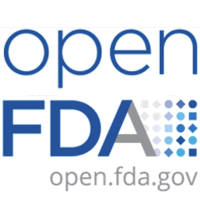 I recently joined the advisory board of Arcadia Healthcare Solutions, a leading provider of analytics, decision support, and workflow enhancement services. At my first advisory board meeting there was a rich debate about the marketplace for care management and population health tools. I’ve spent years studying such solutions at HIMSS and found most of the products are “compiled in Powerpoint”, which is a very agile programming language, since it’s so easy to change…
I recently joined the advisory board of Arcadia Healthcare Solutions, a leading provider of analytics, decision support, and workflow enhancement services. At my first advisory board meeting there was a rich debate about the marketplace for care management and population health tools. I’ve spent years studying such solutions at HIMSS and found most of the products are “compiled in Powerpoint”, which is a very agile programming language, since it’s so easy to change…
data visualization
See the following -
10 Tips for Data Visualization
Agencies should consider a more user-centric and outcome-centric approach to analytics design to visualize policy problems and guide executives toward better, faster, more informed decisions. Read More »
- Login to post comments
2017 Massry Prize Honors Microbiome Research Pioneers

Microbiome researchers Rob Knight, PhD, University of California San Diego, Jeffrey Gordon, MD, Washington University School of Medicine in St. Louis, and Norman Pace, PhD, University of Colorado Boulder, will share this year’s Massry Prize, splitting the $200,000 honorarium. These researchers lead a field that works to produce a detailed understanding of microbiomes — distinct constellations of bacteria, viruses and other microorganisms that live within and around us — and methods for manipulating microbiomes for the benefit of human and environmental health.
- Login to post comments
5 open source dashboard tools for visualizing data
 To start with a confession, I like dashboards. A lot. I've always been fascinated by finding new and interesting ways to bring meaning to data with interactive visualization tools. While I'm definitely a geek for numbers, the human mind is simply much better at interpreting trends visually than it is just picking them out a spreadsheet. And even when your main interest in a dataset is the raw numbers themselves, a dashboard can help to bring meaning by highlighting which values matter most, and what the context of those numbers is...
To start with a confession, I like dashboards. A lot. I've always been fascinated by finding new and interesting ways to bring meaning to data with interactive visualization tools. While I'm definitely a geek for numbers, the human mind is simply much better at interpreting trends visually than it is just picking them out a spreadsheet. And even when your main interest in a dataset is the raw numbers themselves, a dashboard can help to bring meaning by highlighting which values matter most, and what the context of those numbers is...
- Login to post comments
Actuate Enhances Open Source Eclipse BIRT With Connectors To MongoDB, Cassandra, POJO, And Emitters For Microsoft Office Documents
Just in time for BIRT 4.3, renovated BIRT Exchange developer community website sports new UI and easier access to downloads, forums and blogs Read More »
- Login to post comments
Advancing User Experience Research To Facilitate And Enable Patient Centered Research: Current State And Future Directions
Human beings possess well-documented strengths in pattern recognition and higher-order reasoning. This allows individuals to interpret complex data sets in ways that remain difficult to reproduce using computers. [...] Read More »
- Login to post comments
Announcing The Challenges For The 2013 International Space Apps Challenge
The International Space Apps Challenge is an international mass collaboration focused on space exploration that takes place over 48-hours in cities around the world. The event embraces collaborative problem solving with a goal of producing relevant open-source solutions. Today, we are announcing the challenges for this years event! Read More »
- Login to post comments
Christine Doig on Data Science as a Team Discipline
 Data science is about the design and development of solutions to extract insights from data (structured and unstructured) using machine learning and predictive analytics techniques and tools. Data Science as a discipline and Data Scientist as a role have been getting lots of attention in the recent years to solve real world problems with solutions ranging from fraud detection to recommendation engines. Christine Doig, Senior Data Scientist at Continuum Analytics, spoke at this year’s OSCON Conference about data science as a team discipline and how to navigate the data science Python ecosystem.
Data science is about the design and development of solutions to extract insights from data (structured and unstructured) using machine learning and predictive analytics techniques and tools. Data Science as a discipline and Data Scientist as a role have been getting lots of attention in the recent years to solve real world problems with solutions ranging from fraud detection to recommendation engines. Christine Doig, Senior Data Scientist at Continuum Analytics, spoke at this year’s OSCON Conference about data science as a team discipline and how to navigate the data science Python ecosystem.
- Login to post comments
Dadaab: Using Mobile Technology For Large Surveys In Emergency Settings
In August 2011, Internews led a joint communication and information needs assessment with Radio Ergo / International Media Support (IMS) and Star FM of Kenya, with significant support from the Norwegian Refugee Council (NRC). This assessment aimed at understanding the information needs of refugees in Dadaab and exploring ways to improve the flow of communication between refugees, aid agencies and host communities. Read More »
- Login to post comments
Developing Nations Improving Health Communication Through the Use of DHIS2 (Part 1)
 DHIS2 implementations are spreading steadily among national health services in developing countries as well as among international non-governmental organizations (NGOs) working to improving health in the developing world through the use of health information technology. As an open source solution, DHIS2 offers developing countries the advantage of adopting a cost-effective and flexible solution for aggregate statistical data collection, validation, analysis, management, and presentation as well as for data sharing between healthcare professionals and facilities. Organizations and individuals who work with humanitarian software solutions will need to know what DHIS2 is, how it works, and how it might be implemented by national health services and other health-related projects across the globe...
DHIS2 implementations are spreading steadily among national health services in developing countries as well as among international non-governmental organizations (NGOs) working to improving health in the developing world through the use of health information technology. As an open source solution, DHIS2 offers developing countries the advantage of adopting a cost-effective and flexible solution for aggregate statistical data collection, validation, analysis, management, and presentation as well as for data sharing between healthcare professionals and facilities. Organizations and individuals who work with humanitarian software solutions will need to know what DHIS2 is, how it works, and how it might be implemented by national health services and other health-related projects across the globe...
- Login to post comments
FDA Issues RFQ for Large Scale EHR Study - Wants to Leverage VA's Open Source VistA EHR and Database for Research
 The Food and Drug Administration (FDA) yesterday issued a Request for Quotation (RFQ) for a large-scale electronic health record (EHR) system. This RFQ is very important as the objective is to develop a platform to support a critical project by the FDA's Division of Bioinformatics and Biostatistics (DBB) "to conduct research to assess the safety and surveillance of FDA regulated products through the FDA adverse event reporting systems..." Adverse drug reactions are one of the leading causes of death in the US, thus finding which drugs cause negative interactions is of vital importance. The project requires "use of the large electronic medical record (EMR) system..." The project is going to leverage the largest, most comprehensive, and clinically relevant medical records database, that of the US Department of Veterans Affairs (VA).
The Food and Drug Administration (FDA) yesterday issued a Request for Quotation (RFQ) for a large-scale electronic health record (EHR) system. This RFQ is very important as the objective is to develop a platform to support a critical project by the FDA's Division of Bioinformatics and Biostatistics (DBB) "to conduct research to assess the safety and surveillance of FDA regulated products through the FDA adverse event reporting systems..." Adverse drug reactions are one of the leading causes of death in the US, thus finding which drugs cause negative interactions is of vital importance. The project requires "use of the large electronic medical record (EMR) system..." The project is going to leverage the largest, most comprehensive, and clinically relevant medical records database, that of the US Department of Veterans Affairs (VA).
- The Future Is Open
- Login to post comments
Halamka's Recommendations for Effective Care Management
- Login to post comments
Health Information For Remote & Rural Eastern Indonesia
The use of personal mobile phones has increased rapidly, even in remote parts of Eastern Indonesia, revolutionising the way people communicate. I work in a small regional university in Northern Australia (Charles Darwin University) very close to the Eastern Indonesian province of Nusa Tenngara Timur (NTT). Read More »
- Login to post comments
Health IT Implementation And The Importance Of Data Liquidity
We’ve all heard the latest buzz words: big data, data visualization, data integrity. The prevalence of these terms in Health IT circles are evidence that Healthcare organizations are faced with immense amounts of data, and their “buzz” status is more than enough warning that facing data challenges is an imminent prospect. [...] Read More »
- Login to post comments
How a Lifecycle Management Tool Uses Metrics
 Greg Sutcliffe is a long-time member and now community lead of the Foreman community. Foreman is a lifecycle management tool for physical and virtual servers. He's been studying how the real-world application of community metrics gives insight into its effectiveness and discovering the gap that exists between the ideal and the practical. He shares what insights he's found behind the numbers and how he is using them to help the community grow...
Greg Sutcliffe is a long-time member and now community lead of the Foreman community. Foreman is a lifecycle management tool for physical and virtual servers. He's been studying how the real-world application of community metrics gives insight into its effectiveness and discovering the gap that exists between the ideal and the practical. He shares what insights he's found behind the numbers and how he is using them to help the community grow...
- Login to post comments
How Open Data and Open Tools Can Save Lives During a Disaster
 If you've lived through a major, natural disaster, you know that during the first few days you'll probably have to rely on a mental map, instead of using a smartphone as an extension of your brain. Where's the closest hospital with disaster care? What about shelters? Gas stations? And how many soft story buildings-with their propensity to collapse-will you have to zig-zag around to get there? Trying to answer these questions after moving back to earthquake-prone San Francisco is why I started the Resiliency Maps project. The idea is to store information about assets, resources, and hazards in a given geographical area in a map that you can download and print out.
If you've lived through a major, natural disaster, you know that during the first few days you'll probably have to rely on a mental map, instead of using a smartphone as an extension of your brain. Where's the closest hospital with disaster care? What about shelters? Gas stations? And how many soft story buildings-with their propensity to collapse-will you have to zig-zag around to get there? Trying to answer these questions after moving back to earthquake-prone San Francisco is why I started the Resiliency Maps project. The idea is to store information about assets, resources, and hazards in a given geographical area in a map that you can download and print out.
- Login to post comments